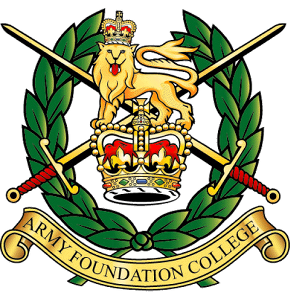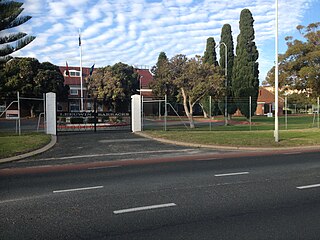
The British Armed Forces are the military forces responsible for the defence of the United Kingdom, its Overseas Territories and the Crown Dependencies. They also promote the UK's wider interests, support international peacekeeping efforts and provide humanitarian aid.

Children have been recruited for participation in military operations and campaigns throughout history and in many cultures.
Military science is the study of military processes, institutions, and behavior, along with the study of warfare, and the theory and application of organized coercive force. It is mainly focused on theory, method, and practice of producing military capability in a manner consistent with national defense policy. Military science serves to identify the strategic, political, economic, psychological, social, operational, technological, and tactical elements necessary to sustain relative advantage of military force; and to increase the likelihood and favorable outcomes of victory in peace or during a war. Military scientists include theorists, researchers, experimental scientists, applied scientists, designers, engineers, test technicians, and other military personnel.

A military, also known collectively as an armed forces, are a heavily armed, highly organized force primarily intended for warfare. Militaries are typically authorized and maintained by a sovereign state, with their members identifiable by a distinct military uniform. They may consist of one or more military branches such as an army, navy, air force, space force, marines, or coast guard. The main task of a military is usually defined as defence of their state and its interests against external armed threats.

Military recruit training, commonly known as basic training or boot camp, refers to the initial instruction of new military personnel. It is a physically and psychologically intensive process, which resocializes its subjects for the unique demands of military employment.

A veteran is a person who has significant experience and expertise in an occupation or field.
An enlisted rank is, in some armed services, any rank below that of a commissioned officer. The term can be inclusive of non-commissioned officers or warrant officers, except in United States military usage where warrant officers/chief warrant officers are a separate officer category ranking above enlisted grades and below commissioned officer grades. In most cases, enlisted service personnel perform jobs specific to their own occupational specialty, as opposed to the more generalized command responsibilities of commissioned officers. The term "enlistment" refers solely to a military commitment whereas the terms "taken on strength" and "struck off strength" refer to a service member being carried on a given unit's roll.
Lesbian, gay, bisexual, transgender, and queer (LGBTQ) personnel are able to serve in the armed forces of some countries around the world: the vast majority of industrialized, Western countries including some South American countries such as Argentina and Chile in addition to South Africa, and Israel. The rights concerning intersex people are more vague.

The Optional Protocol to the Convention on the Rights of the Child on the Involvement of Children in Armed Conflict (OPAC), also known as the child soldier treaty, is a multilateral treaty whereby states agree to: 1) prohibit the conscription into the military of children under the age of 18; 2) ensure that military recruits are no younger than 16; and 3) prevent recruits aged 16 or 17 from taking a direct part in hostilities. The treaty also forbids non-state armed groups from recruiting anyone under the age of 18 for any purpose.

Military recruitment refers to the activity of attracting people to, and selecting them for, military training and employment.

Military personnel or military service members are members of the state's armed forces. Their roles, pay, and obligations differ according to their military branch, rank, and their military task when deployed on operations and on exercise.

Women in combat refers to female military personnel assigned to combat positions. The role of women in the military has varied across the world’s major countries throughout history with several views for and against women in combat. Over time countries have generally become more accepting of women fulfilling combat roles.

The Army Foundation College (AFC) in Harrogate, England, is the sole initial military training unit for British Army recruits who enlist aged between 16 and 17.5 years.

Military sociology is a subfield within sociology. It corresponds closely to C. Wright Mills's summons to connect the individual world to broader social structures. Military sociology aims toward the systematic study of the military as a social group rather than as a military organization. This highly specialized sub-discipline examines issues related to service personnel as a distinct group with coerced collective action based on shared interests linked to survival in vocation and combat, with purposes and values that are more defined and narrow than within civil society. Military sociology also concerns civil-military relations and interactions between other groups or governmental agencies.

Sir Simon Charles Wessely is a British psychiatrist. He is Regius Professor of Psychiatry at the Institute of Psychiatry, King's College London and head of its department of psychological medicine, vice dean for academic psychiatry, teaching and training at the Institute of Psychiatry, as well as Director of the King's Centre for Military Health Research. He is also honorary consultant psychiatrist at King's College Hospital and the Maudsley Hospital, as well as civilian consultant advisor in psychiatry to the British Army. He was knighted in the 2013 New Year Honours for services to military healthcare and to psychological medicine. From 2014 to 2017, he was the elected president of the Royal College of Psychiatrists.
Sexual assault in the Canadian Armed Forces has been a pervasive issue affecting women, youth, and men in the Canadian Forces and Canadian Cadet Organizations. Canadian Forces sexual assault cases have been extensively reported in national Canadian news media. The scope and depth of the sexual assault problem first came to light in 1998, when Maclean's magazine broke the story. Individual cases continued to be reported. The issue became a national focus again when MacLean's magazine published another exposé exploring the extent of rape culture in Canada's military.

Suicide in the military is the act of ending one's life during or after a career in the armed forces.

Neil Greenberg is an academic psychiatrist, who is a specialist in the understanding and management of psychological trauma, occupational mental ill-health and post traumatic stress disorder. Greenberg works with King's College London and served as the President of the UK Psychological Trauma Society from 2014 to 2017. He also runs the psychological health consultancy March on Stress. During the 2020 COVID pandemic, Greenberg was part of the NHS England and Improvement Wellbeing Team and contributed to the national response to protect the mental health of NHS workers.

Sexual harassment in the military is unwanted sexual behaviour experienced as threatening, offensive, or otherwise upsetting, which occurs in a military setting.

Sexual misconduct in the British military is unwanted sexual behaviour occurring in military organisations of the United Kingdom, including verbal and physical harassment, assault, and rape.

















